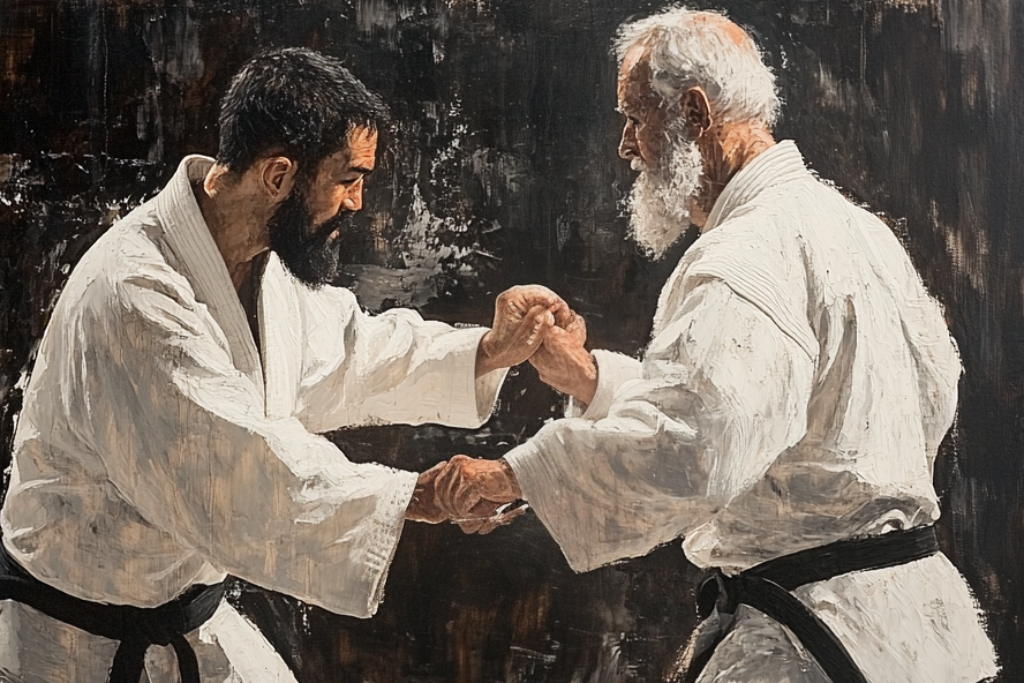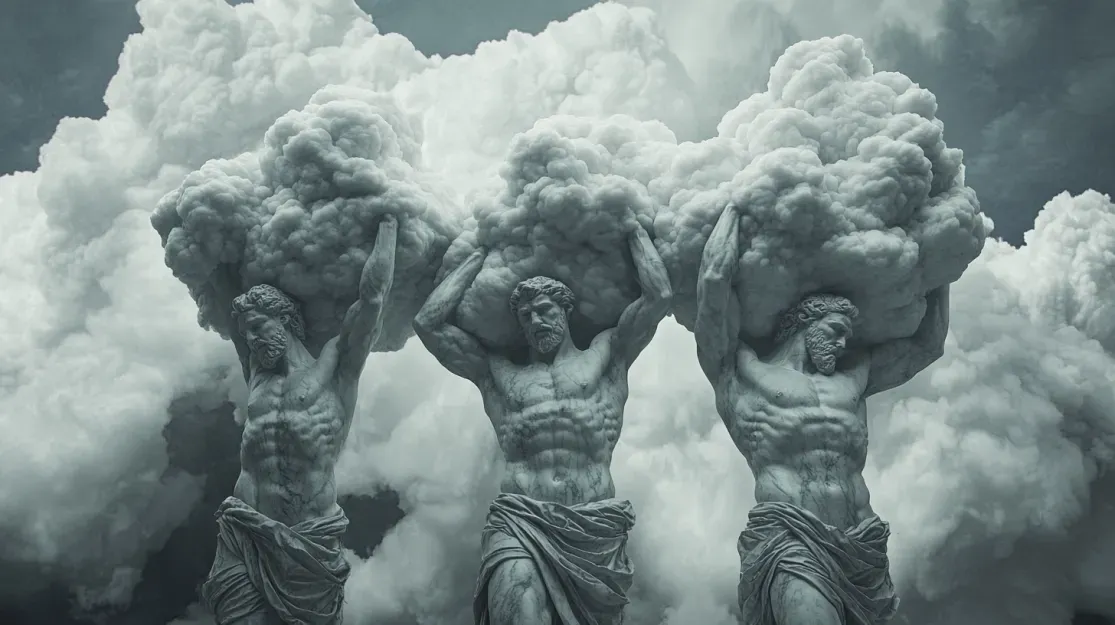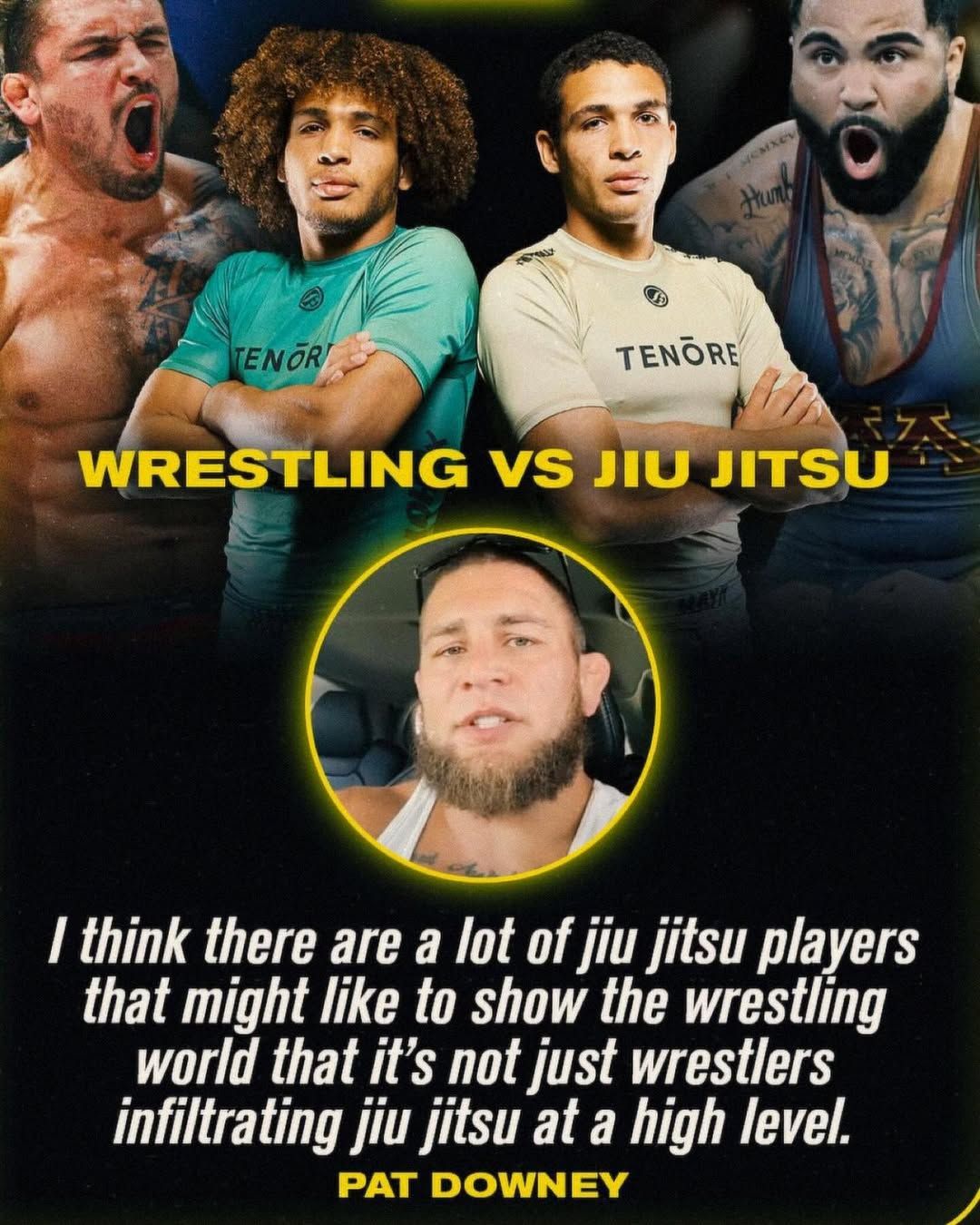
Blog Layout
Embrace the Journey: The Roles of Student, Rival, and Master in Martial Arts
August 7, 2024
At Forge Wrestling & Jiu Jitsu, we believe in the continuous pursuit of skill and self-improvement. One philosophy that has deeply influenced our approach is the Shamrock Development System, introduced by MMA legend and former UFC Light Heavyweight Champion, Frank Shamrock. Although Shamrock’s model is less complex than our expanded ideas, it laid the foundation for our concept of student, rival, and master.

The Shamrock Development System
Frank Shamrock’s system uses three categories: minus, equal, and plus. Minus refers to teaching someone with less skill or experience, equal means engaging with someone of similar skill or experience, and plus signifies learning from someone with more skill or experience. Shamrock believed any practitioner of martial arts should at any point in their career posses a student to teach, a rival to train with and a master to learn from. Our philosophy retains these fundamental principles but delves deeper into their application.
Understanding the Roles: Student, Rival, and Master
In martial arts, most people you encounter will embody one of these three roles. It’s essential to understand that these roles are relative to your perspective as the observer. Someone who appears as a master to you may be a student to another. Likewise, you will fulfill one of these roles for others in your life.
Many mistakenly believe that the status of a master is a permanent title. In reality, these roles are fluid and change over time. Today’s student may become tomorrow’s master, and today’s master may become tomorrow’s rival. This dynamic is akin to the law of conservation of energy: it can neither be created nor destroyed, only transformed or transferred.
The Ever-Changing Roles in Martial Arts
In martial arts, the shifting roles between peers are more evident than in other fields. Any pursuit that pits individuals against one another under a clear set of rules like chess or sparring in martial arts makes it easier to gauge your competence or standing within the hierarchy of said pursuit. While they are called martial arts, this is not “art” in the modern, aesthetic sense of the word. Beauty is not in the eye of the beholder. The martial arts are far more utilitarian. The beauty of some techniques are undeniable but ultimately all that matters is the effectiveness of both your technique and strategy.
A student who once couldn’t make you tap to a submission might now do so, signaling a paradigm shift in your relationship from student to rival. This transformation should be embraced as an opportunity for growth. Being aware of your relationship with peers is crucial for skill development. If you can’t honestly assess your standing relative to others, it may hinder you. Perceiving a budding rival beneath you or a former master as exalted above you may distort your progress. Regularly evaluating your status among your peers should be a healthy practice to avoid resentment or bitterness about the changing of these roles.
Breaking Down the Roles and Sub-Roles
To provide a comprehensive understanding, we categorize the main roles into sub-roles:
Students:
Students:
- Receptive Students: Eager to learn, curious, and willing to invest time in training.
- Reluctant Students:
Unwilling to learn, indifferent, and lacking enthusiasm.
Rivals: - Friendly Rivals: Competitive equals without animosity.
- Hostile Rivals: Competitive equals with underlying tension.
Masters:
- Natural Masters: Skilled with low-effort, unconscious competence.
- Learned Masters:
Achieved skill through high-effort, conscious and deliberate practice.
The Benefits of Each Role
Each role and sub-role offers unique benefits. Receptive students, friendly rivals, and natural masters provide obvious advantages in a supportive environment. However, reluctant students, hostile rivals, and learned masters also have valuable lessons to teach you about yourself. They challenge you in different ways, fostering resilience and adaptability.
Understanding these roles as a spectrum rather than a rigid hierarchy allows individuals to occupy multiple roles simultaneously. The journey of mastering martial arts is about continuous learning and adaptation. There is no final peak upon which masters rest peacefully unchallenged. If no one in your dojo grows to rival your sensei in skill, the question of their ability or intention to lead should be brought into question.
In the words of 19th Century Philosopher Friedrich Nietzsche: What is great in man is that he is a bridge and not an end. The goal of the master should be to produce students greater than himself. If your master does not want his students to surpass him than he is no master at all, but in reality a hostile rival. What stands in the way, becomes the way.
Come Train With Us
At
Forge Wrestling & Jiu Jitsu, we encourage you to embrace the dynamic roles of student, rival, and master in your martial arts journey. Recognize the fluid nature of these roles, and use them as opportunities for growth and development. Remember, the map is not the territory, and these models are aids to understanding, not reality itself.
Share
Tweet
Share
Mail
BLOG

October 8, 2024
In both wrestling and jiu jitsu, success is built on a combination of physical and mental skills. While it’s tempting to focus on being the strongest or the most explosive, the real path to dominance on the mat comes down to three key elements: technique, cardio, and strength. These elements form a clear hierarchy, each one supporting the next, and together they determine your effectiveness as a grappler. Let’s break it down.

October 7, 2024
On September 28th, Pat Downey, known for his unfiltered personality and unmatched grappling prowess, took to Instagram to share an insightful reflection on the relationship between wrestling and jiu jitsu. His post addressed a topic that’s been brewing in the grappling community for years: the often adversarial mindset between wrestlers and jiu jitsu practitioners. Downey’s post read: “As grapplers, we need a paradigm reset when it comes to this topic. I was just as guilty of this a few years ago before I met @vagnerrochabjj [Vagner Rocha], and he opened my 👀’s to how much technique had eluded me over the years. By being closed-minded, too much ego, & ultimately prideful; I missed out on a lot of knowledge. It’s not wrestling versus jiu jitsu. It’s wrestling AND jiu jitsu.”